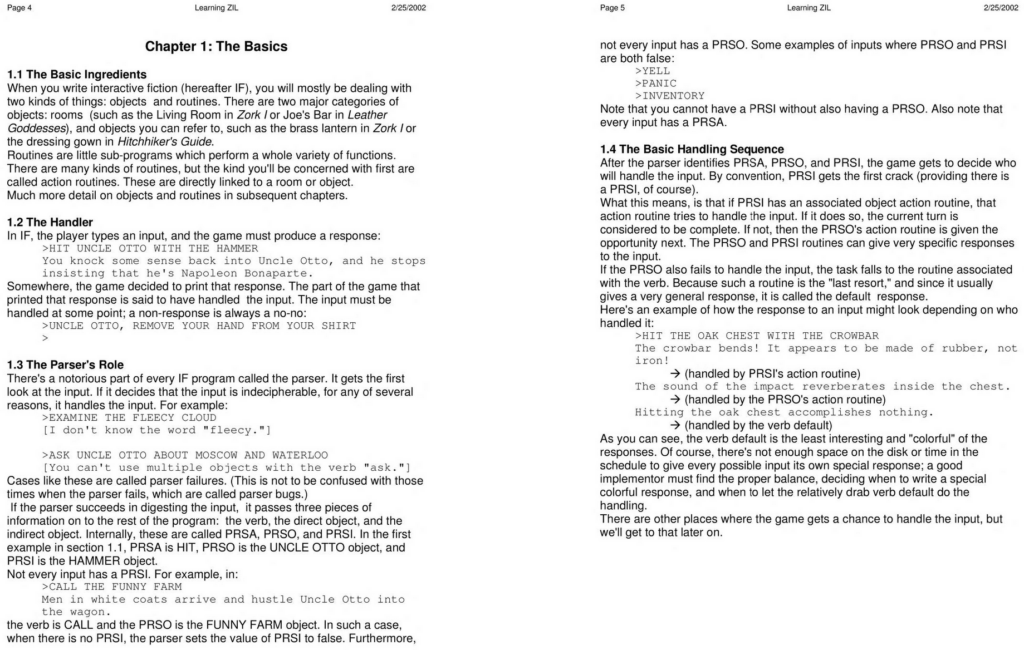Back in the days of hallowed Infocom, the people who made a living making text adventures better than anyone else ever has before or since, life was often pretty harrowing. They had some huge hits, like Zork, Planetfall and The Hitchhiker’s Guide to the Galaxy, but as time passed and graphic adventures took up more and more of the market, It became harder to make the case for a purely textual medium.
Infocom tried different things to diversify, like a weird computer and board game called Fooblitzky, and an office software package called Cornerstone. In the end they got bought out by Activision, which had renamed itself to “Mediagenic.” But that’s a story for another time.
There was a period where earlier Implementors, or “imps,” had left the company, so it was left to remaining employee Steve Meretzsky, the creator of the afore-mentioned Planetfall, and co-author with Douglas Adams of the Hitchhiker’s Guide game, to write a manual to tell new hires how to use their bespoke development tool, ZIL, to make text adventure games.
This is that manual (78 pages), preserved on the Internet Archive. And it’s great! Steve had made multiple successful games with it and knew his stuff. He didn’t know everything about it, and at multiple points appeals to a mystery Stu, who was probably Stu Galley, fellow imp. We don’t know if he ever filled in those holes when talking to people. Stu passed away in 2018, so I guess it’s a moot point now.

Meretzky is a fine and funny writer, and his personality shines through the document. And he’s a good teacher too, I feel like I could use this to make games with ZIL, while Inform 7, while I understand it is also great and has extensive documentation with lots of examples, I couldn’t handle.
ZIL is a Lisp-like language, where everything is lists. It compiles to “Z-code,” a virtual machine that was run by Infocom’s interpreter (which is the secret of their many ports to different computer platforms of that era), and of which there are now many different free and open source ports like Frotz and Gargoyle. So you could use this to write a ZIL game, use ZILF and ZAPF to build it, and run it in Frotz. As Exercise Three in the manual, Meretzsky tasks the read with building a complete game, collaborating with the Infocom marketing department to design a box for it, and then selling 250,000 copies. That’s pretty difficult since Infocom is gone and it’s essentially impossible now to sell text adventures for money. Maybe you’ll find a way.
Learning ZIL, or, Everything You Always Wanted To Know About Writing Interactive Fiction But Couldn’t Find Anyone Still Working Here To Ask (Internet Archive, PDF)
